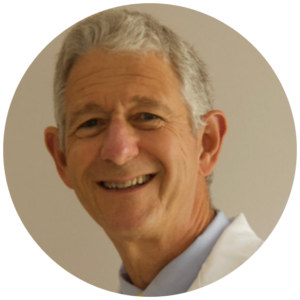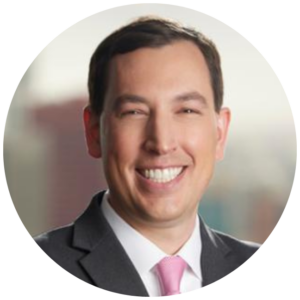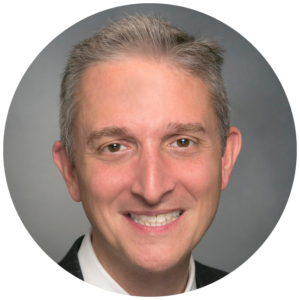Locums CME is a bi-weekly roundup of recent news that matters to locum tenens providers. Stay in the loop on what’s new in the locums industry, and make the most of the locum tenens lifestyle with our fresh finds.
Work as A VHA Locum Tenens Provider and Serve the Nation’s Heroes While Practicing Medicine
10/25/23
The Veterans Health Administration (VHA) is the largest healthcare network in the US, administering medical care to more than 9 million veterans yearly through a network of more than 1,300 healthcare facilities nationwide.
The VHA is a unique opportunity for servant-minded providers who want to work and serve in a medical role while also contributing to the well-being of our nation’s heroes.
In a recent article, Medicus Healthcare Solutions looked at the VHA benefits for locum tenens in greater detail. The VHA has a variety of opportunities that differ from a traditional medical practice for locum tenens physicians and advanced practice providers, such as:
1. Licensing Flexibility: The VHA allows practicing across state lines with a single active state license, which could be one of the more compelling advantages of working VA locums. As long as providers possess at least one active, unrestricted state license, they can work in any state without applying for another.
2. Known Patient Demographics: Locum tenens have the advantage of working with a specific patient demographic, allowing them to provide tailored and expert care for each patient.
3. Manageable Patient Load: Some VA locum tenens positions offer lower patient volumes and acuity, which enhances the provider-patient relationship through more personalized care.
4. Work Schedule: The VHA offers flexible scheduling options for locums, including traditional 9-5 work hours with low or no on-call duties, fostering work-life balance and potentially reducing professional burnout.
5. Extended Assignments: Assignments with the VHA often span six months to five years, appealing to those seeking stable, long-term positions.
6. Opportunity for Travel: The nationwide presence of VHA facilities provides locum tenens the chance to travel and work in various locations, with convenient housing options often available.
7. Educational Environment: Many VHA hospitals are teaching facilities, offering the chance to mentor residents and fellows and stay abreast of new medical technologies and methodologies.
Working with the VHA lets healthcare providers blend their clinical expertise with a sense of purpose. It could be an excellent opportunity for those considering a life in locums. For more details on working with the VHA, check out the full article from Medicus Healthcare Solutions.
Your Locums Prescription
Podcast: Tips to Help Locums Earn The Best Possible Work Contract
10/20/2023
 In the evolving healthcare employment landscape, Jon Appino, the principal and founder of Contract Diagnostics, works to ensure physicians get optimal work contracts. Appino has a deep understanding of the physician marketplace. He has helped thousands of physicians navigate the intricacies of employment agreements.
In the evolving healthcare employment landscape, Jon Appino, the principal and founder of Contract Diagnostics, works to ensure physicians get optimal work contracts. Appino has a deep understanding of the physician marketplace. He has helped thousands of physicians navigate the intricacies of employment agreements.
Appino brings personalized advice and negotiation expertise to the table, addressing common contractual pitfalls and oversights that frequently entangle healthcare professionals during their hiring phases.
Appino joined Dr. Andrew Wilner in a 40-minute podcast episode on Dr. Wilner’s podcast “The Art of Medicine,” where Appino shared insights into contract negotiations and the nuances of the physician employment market. Appino’s approach is about securing a contract and ensuring that it aligns perfectly with

the physician’s professional and personal needs. Listeners can learn more about the best strategies to navigate the often complex terrain of contract negotiations.
Find out more about Appino’s process in the episode of “The Art of Medicine,” or read more about Appino’s background in this article preview from Dr. Wilner.
Hayes: Examining 5 Types of Locum Tenens Assignments
11/1/2023
Healthcare facilities increasingly rely on locum tenens physicians, with 90% of them utilizing these roles to fill gaps in coverage, reflecting a diversifying landscape of physician employment. Locum tenens positions offer a full spectrum of opportunities, catering to different professional needs and lifestyles.
In a recent post, Hayes Locums broke down the five most common types of locum tenens physician jobs:
- Short-term locum tenens positions allow physicians to earn supplemental income, repay educational debts, or fund significant purchases while maintaining their full-time status. Short-term assignments serve as flexible options for early-career physicians to explore various practice settings or to maintain clinical skills during transitional periods.
- Long-term locum assignments present an alternative for physicians looking for the stability of a regular position without the administrative responsibilities tied to full-time hospital employment. Long-term locum tenens roles let providers focus on patient care without all of the non-clinical duties that often contribute to professional burnout.
- Part-time locums cater to providers who want to balance medicine with personal commitments or gradually transition towards retirement. Part-time locums get the flexibility to dictate their schedules and favorable compensation rates, so these assignments keep physicians’ clinical skills sharp without the demand for full-time hours.
- Travel locum tenens positions offer physicians the unique advantage of practicing across different regions, backed by support in licensing processes and covered expenses.
- Emergency coverage locum roles are crucial for continuity of care in fully-staffed facilities during unforeseen physician absences and are particularly vital in under-resourced, rural hospitals.
If you’re a physician, nurse practitioner, or advanced practice provider considering a shift to locum tenens work, read a more in-depth explanation of the types of locums assignments in the full article from Hayes Locums.
All-Star: Benefits of Practicing Locum Tenens as a DO or MD
10/19/2023
The 2022–23 academic year marks a milestone for osteopathic medical education, with a record class size enrollment and a quarter of US medical students opting for the Doctor of Osteopathic Medicine (DO) programs. The American Osteopathic Association says that more than half of the DO graduates choose primary care specializations.
Despite the rise in DO program enrollment, the traditional Doctor of Medicine (MD) remains the predominant choice for many, further evidenced by the 19,748 US MD seniors participating in the 2023 Main Residency Match program. DOs and MDs share some commonalities, including participation in residency matches, state licensure requirements, and the authorization to prescribe medications.
The locum tenens practice offers a myriad of benefits for both DO and MD degree holders. All Star Healthcare Solutions highlighted the following benefits of locum tenens for new physicians:
1. Diverse Clinical Experiences: Physicians with DO and MD degrees have the opportunity to work in varied healthcare settings such as hospitals, clinics, and private practices, which enriches their professional journey with a broad spectrum of clinical exposures.
2. Flexible Scheduling: Embracing a full-time locum tenens career gives doctors control over their work schedules, providing the freedom to choose the duration and frequency of their assignments according to personal and professional preferences.
3. Collaborative Knowledge Sharing: Each locum tenens assignment allows physicians to share best practices and learn from their colleagues, fostering an environment of continuous learning and professional development.
4. Cultural Immersion: Temporary assignments offer more than just professional engagement; they allow doctors to explore and connect with new communities, making each location a unique personal and social experience that goes beyond the confines of the workplace.
Each assignment offers a unique experience, potentially leading to lasting connections with places and people. For those interested in learning more, see the article from All Star Healthcare Solutions.
Free Webinar to Provide Physicians Insights into Earning and Negotiating a Better Contract
11/2/2023

Physician contracts are notoriously complex, but they are also one of the most important agreements you’ll ever sign. The contract a healthcare provider signs influences everything from earning potential to work schedule.
In a free webinar titled, “Reviewing Your Contract (and Negotiating a Better One),” to be held at 6 p.m. on Wednesday, Nov. 8th, Contracts Diagnostics Founder and CEO Jon Appino and Dr. Kathryn Samoski will give providers the tools they need to tell the difference between an average job offer and a great one. They will also teach attendees the different questions to ask and how to identify whether or not an agreement is negotiable.

The webinar is presented by Weatherby Healthcare. To get access to these tips from Appino and Dr. Samoski and other insights into physician contracts, register at this link.
Physician Wellness Retreat
Redefining Healthcare Worker Burnout as a Workplace Issue
10/29/2023
A prevalent narrative in healthcare suggests healthcare workers are “suffering from burnout,” a framing that often implies the need to “fix the worker” through coping strategies and well-being programs. However, this perspective has led to numerous interventions aimed at helping workers manage burnout symptoms without addressing the root causes in the workplace itself.
There is a contrast between the abundant resources and literature focused on coping mechanisms for healthcare workers and the relative scarcity of strategies to change workplace conditions that lead to burnout. The real issues often include overwhelming workloads, high patient-to-staff ratios, and excessive administrative burdens, which need to be adequately addressed by current measures.
In an article from KevinMD, Hospitalist Dr. Chetan Wasekar proposes that the term “toxic workplace environment” should become as prevalent as “burnout” when discussing workplace mental health issues. The emphasis should be on detoxifying the workplace as the primary objective, he says, since burnout is a symptom of these underlying problems, much like a cough is to pneumonia.
Dr. Wasekar said the World Health Organization classified burnout as a “phenomenon” rather than a disease, following a brief initial categorization error. He says the categorization only fits if the “toxic workplace environment” — the ailment — receives its due focus and recognition, including a dedicated disease classification code.
Experts often say the scarcity of medical staff is a barrier to creating better workplace conditions. However, prioritizing establishing a healthier work environment would help facilities attract and retain healthcare professionals. Read the full article from KevinMD here.
Doctor’s Notes
AMA Calls for More Physician Leadership to Address Systemic Problems
10/26/2023
 In an era of pronounced change and challenges within the healthcare landscape, leadership from medical professionals is pivotal. A recent webinar between the American Medical Association (AMA) President Jesse M. Ehrenfeld, MD, MPH, and Stephen Parodi, MD, of The Permanente Medical Group, alludes to the urgency needed to address some of the systemic issues that have led to physician burnout and healthcare staff shortages.
In an era of pronounced change and challenges within the healthcare landscape, leadership from medical professionals is pivotal. A recent webinar between the American Medical Association (AMA) President Jesse M. Ehrenfeld, MD, MPH, and Stephen Parodi, MD, of The Permanente Medical Group, alludes to the urgency needed to address some of the systemic issues that have led to physician burnout and healthcare staff shortages.
 Addressing burnout, a critical factor impacting healthcare quality and sustainability, has led to the implementation of the AMA’s Recovery Plan for America’s Physicians. The AMA’s plan includes strategies like supplying resources aimed at physician well-being and workflow modifications. The Washington Permanente Medical Group, for instance, reported a significant drop in burnout rates after applying AMA’s assessment tools and leveraging digital technology to ease administrative tasks.
Addressing burnout, a critical factor impacting healthcare quality and sustainability, has led to the implementation of the AMA’s Recovery Plan for America’s Physicians. The AMA’s plan includes strategies like supplying resources aimed at physician well-being and workflow modifications. The Washington Permanente Medical Group, for instance, reported a significant drop in burnout rates after applying AMA’s assessment tools and leveraging digital technology to ease administrative tasks.
Dr. Ehrenfeld and Dr. Parodi also highlighted the intertwined relationship between burnout and the emerging physician shortage, stressing the immediacy of this concern given the extensive timeframe required to train new physicians. Initiatives to expand the physician workforce are imperative for healthcare organizations, along with strategies to foster diversity in the healthcare sector.
The AMA and The Permanente Medical Group actively engage in cultural competency and equitable care initiatives. The approach they’ve taken extends to combatting the negative impacts of medical misinformation on patient trust and physician well-being.
Explore more of the article’s strategies and access the whole webinar discussion and other resources in the report from the AMA.
Harassment Rates Surge Among Healthcare Workers, CDC Study Reveals
10/25/2023
A recent CDC study reveals that reports of harassment among healthcare workers have more than doubled from 6.4% to 13.4% between 2018 and 2022. The reported instances of harassment were also significantly correlated to poor mental health, with those reporting harassment more likely to report anxiety, depression, and burnout.
Healthcare providers in various healthcare settings reported harassment incidents in hospitals, clinics, and long-term care facilities. Healthcare workers in the study also said their trust in hospital management declined in the survey periods, and frequent staffing shortages increased.
Results from the survey weren’t just limited to healthcare workers, though, with other industries included. However, the CDC found that the healthcare industry experienced more significant declines in mental health outcomes than any other profession during the COVID-19 pandemic.
After releasing this new data, the CDC put the onus on healthcare organizations to be proactive and create safer and more respectful environments for their staff by implementing policies, training programs, and support mechanisms to combat harassment and do more to protect the well-being of healthcare workers.
Fierce Healthcare broke down the CDC’s findings and their implications for the healthcare industry in greater detail in their full article.
Report Shows Widespread Physician Compensation Increases
10/24/ 2023
Physician cash compensation is on the rise for medical and surgical specialists. It is projected to continue increasing, according to a report from SullivanCotter, an independent consulting firm developing programs and workforce strategies for the healthcare industry.
SullivanCotter’s physician compensation report identified substantial increases in total cash compensation for medical and surgical specialists, with primary care and hospital-based specialties seeing the most significant median increases of 9.5% and 8.7%, respectively. The primary care sector noted a 7.4% rise in median work relative value units (wRVU) productivity from 2022 to 2023, with all specialty categories experiencing moderate cash compensation, particularly pediatric surgical rates, which spiked by 8.8%.
The report reflects the ongoing challenges in healthcare compensation influenced by market forces like increased turnover, physician burnout, and regulatory changes. These factors prompted healthcare organizations to adjust physician and advanced practice provider care models and compensation plans, with 70% of surveyed entities utilizing base salary and wRVU components in their compensation structures.
In contrast, the average doctor’s pay saw a decline of 2.4% in 2022 amidst economic challenges and a persistent gender pay gap. Men earned almost $110,000 more than women, a 26% difference when accounting for specialty, location, and experience, potentially exacerbating burnout, which is notably higher among women physicians.
For further insight and the full scope of data, read the full article from Healthcare Finance or go deeper into the latest developments in the healthcare industry with the full report from SullivanCotter.









